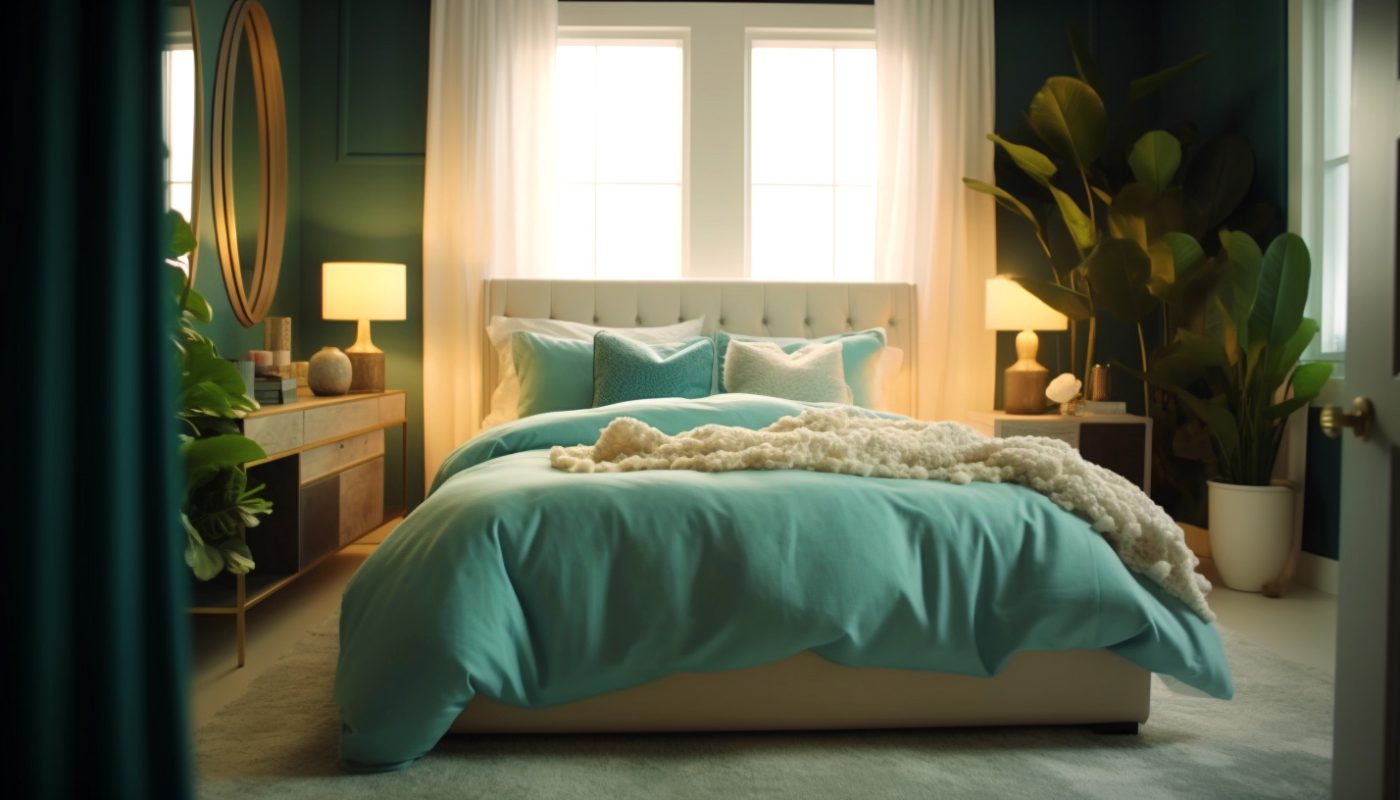Last Updated on July 3, 2025 by Avia
Sleep is one of the most crucial aspects of your total well-being. Without it, every facet of your life could be impacted – and not in good ways. From reduced performance, fuzzy mental focus, and even weakened spiritual energy – sleep is essential for your best self. That’s why I’m sharing these simple, easy-to-accomplish bedroom design tips for better sleep that will make your quest for rest fully obtainable.
Table of Contents
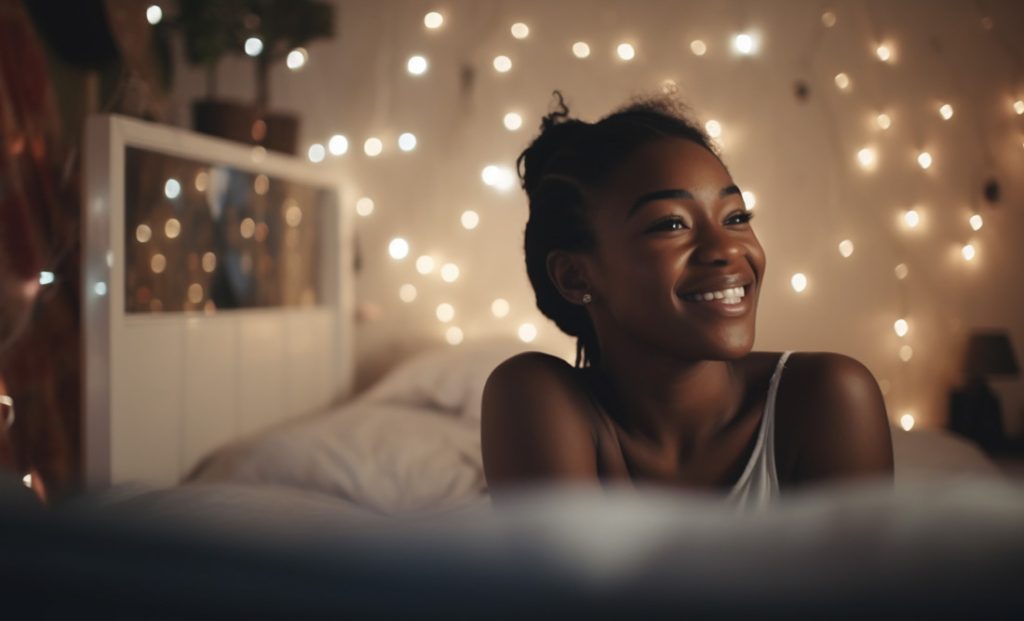
Take a Closer Look at Your Bedroom
Before we go into these super-simple bedroom design tips for better sleep, let’s take a hard look at where you sleep right now. Let’s get real. I can give you all the best design tips in the world but if you don’t go into redesigning your bedroom with clarity and an honest view – not much improvement in your sleep is going to happen. So, stand in your bedroom (or wherever you sleep) and really scrutinize it. Then, imagine yourself getting a solid session of sleep in that area. If it’s hard to visualize yourself getting stellar shuteye, then it’s time to reimagine where you sleep.
Ideally, your bedroom’s primary function is to give you a good night’s sleep. Unfortunately, some bedrooms aren’t designed for a comfortable and long-lasting slumber. And this is why knowing how to design your bedroom for better sleep is crucial. This way, you get the most out of the most vital room in your home. These seven simple bedroom tips for better sleep will ensure a revitalizing rest that will prepare you for the next day’s activities.
1. Choose a Soothing Color
Some colors promote sleep, so choosing the right color for your bedroom is critical. It’s easy to pick any of your favorite colors to make your bedroom speak your personality. However, like color psychology in marketing, bedroom colors also invoke specific physical and emotional responses. Although these responses won’t have the same effect on people, some standard colors, proven by research, invoke a calming sensation.
The impact of bedroom colors depends on several things. Some associate color with weather and objects, while others associate color with culture or emotions. According to research, warm colors induce excitement, while cool colors invoke restful sleep. One thing is for sure the last color you see before you close your eyes will gravely impact how well you sleep.
Here are some soothing colors for your bedroom:
Blue
The color blue is attached to the ocean and skies. According to recent studies, rooms with blue-painted walls are less likely to encourage excitement in occupants than rooms with red-colored walls. Blue invokes calmness and relaxation, which is a perfect bedroom color. You can paint your walls blue or accent wall blue and throw some decorative pillows or rugs as accessories.
Green
Green is also another calming color that can promote restful sleep. Since green is associated with nature, this is a perfect color for your bedroom. However, choosing the right shade of green is crucial. For instance, yellow-green may be associated with rotten food. Meanwhile, sage and mint green are both calming colors for your bedroom. You can display indoor plants or green artwork in your bedroom for that calming effect.
White
Painting your bedroom wall white is the most common route for homeowners. White is associated with happiness, such as fluffy clouds, which induce relaxation. A white ceiling and wall also evoke positive emotions and bring fewer distractions.
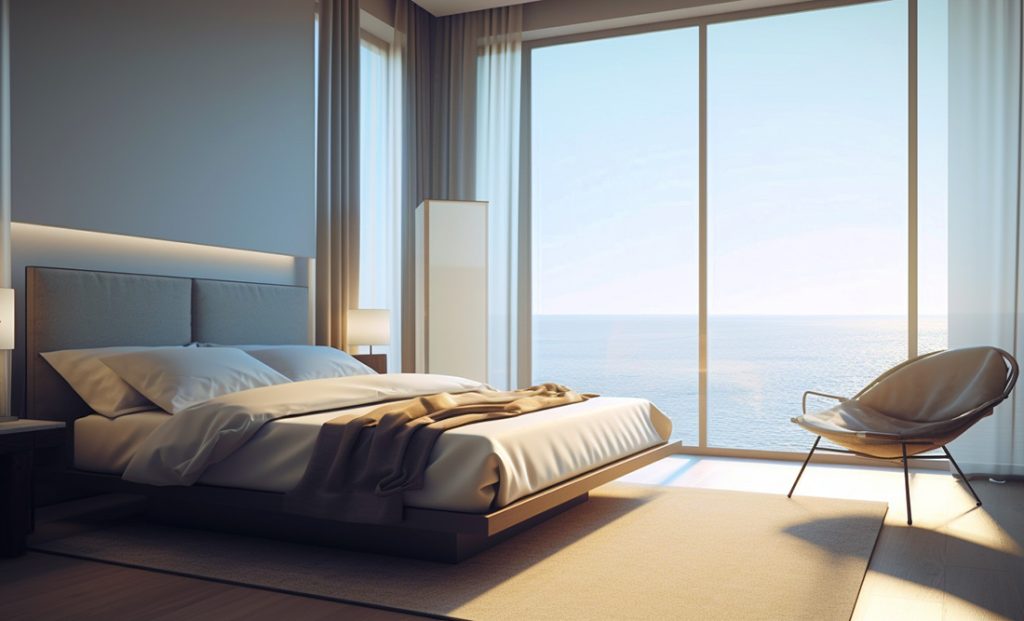
2. Set the Right Temperature
Bedroom temperature can significantly impact your sleep quality. According to a National Sleep Foundation survey, a cool bedroom temperature is one of the most crucial factors in restful sleep. Warmer temperatures can make people feel restless and uncomfortable. It can also make you feel dehydrated and sweaty.
Experts say the right bedroom temperature for better sleep is between 60 and 72 degrees Fahrenheit.
Here are some tips on keeping your bedroom cool for better sleep:
- If you don’t want to put your air conditioning in full blast all night, turn on your fan or keep your windows open.
- Control bedroom humidity by using a humidifier or displaying indoor plants.
- Use the best sheets, mattresses, pillows, comforters, and pajamas to reduce sweating and eliminate uncomfortable sleep.
- When sleeping during the day, close the blinds to eliminate heat buildup.
3. Keep your Bedroom Clutter-Free
One of the essential tips on how to design your bedroom for better sleep is to eliminate clutter. Clutter is the culprit of anxiety, stress, and constant worry. Muddled messes could also potentially result in a more serious underlying disorder called hoarding.
Hoarding is the overabundance of self-attachment to possessions you don’t even need. Clutter is one of the reasons why you get distracted because you constantly have to worry about organizing stuff around your bedroom. Not to mention, disorder, debris, and chaos in the bedroom creates disharmony in your energy. So, think about going minimalist and clearing out the clutter.
Here are some ways to declutter your bedroom:
- Schedule regular decluttering to ensure you make way for new things and clothes.
- Ensure you have enough storage in your bedroom by purchasing types of dressers or chests that give you ample storage.
- Try to pick a handful of items you can give or sell every day.
- Go through your pile of clothes and eliminate what you’re not wearing anymore. You can donate or sell clothes to make way for new ones.
- Grab a few boxes and segregate your things. Label them with stuff you can relocate, sell, donate, and throw away.
- Use baskets, bowls, and trays to carry smaller items such as earrings, knick-knacks, keys, watches, etc.
- Invest in multipurpose furniture that can also serve as your chair or table and storage.

4. Keep Your Bedroom Free From Distractions
Ensure your bedroom is free from distractions when it’s time for sleep. White noise can be one of the reasons why you have a hard time sleeping at night. One of the ways you can block white noise is to purchase white noise machines. Better yet, go the traditional route by buying earplugs that block out white noise.
Another way to keep yourself from getting distracted before bed is to turn off the TV an hour before sleeping. You may also get rid of the bedroom television and display it in the living room for everyone.
Finally, gadgets also distract you from sleeping. LEDs emit blue light, which works against melatonin. Avoid checking your mobile phones or working late at night to ensure you’re not exposed to the computer or mobile screens.
5. Control Lights In Your Bedroom
Light is a powerful signal that our body needs to identify whether it’s time to sleep. The absence of light means it’s time to rest, while bright lights signal the body for stimulating activities. Light signals the body’s circadian rhythm, part of the human biological clock regulating sleep.
Try to illuminate your bedroom with a low color temperature to ignite feelings of drowsiness. You can replace your bedroom lights with amber-hue bulbs or any light bulb with warm colors.
Warmer or dimmer light signals your brain that it’s time to rest and produces more melatonin.
Try to avoid harsh lights in your eyes before going to bed, such as recessed downlights that hover above the bed. Avoid recessed downlights that focus light on your retina and negatively impact your sleeping pattern.
Finally, investing in dimming lighting fixtures is another simple yet powerful way to control bedroom lighting. The ability to adjust bedside lighting brightness when you read before bed and lower it just before you doze off can help you get a good night’s rest.
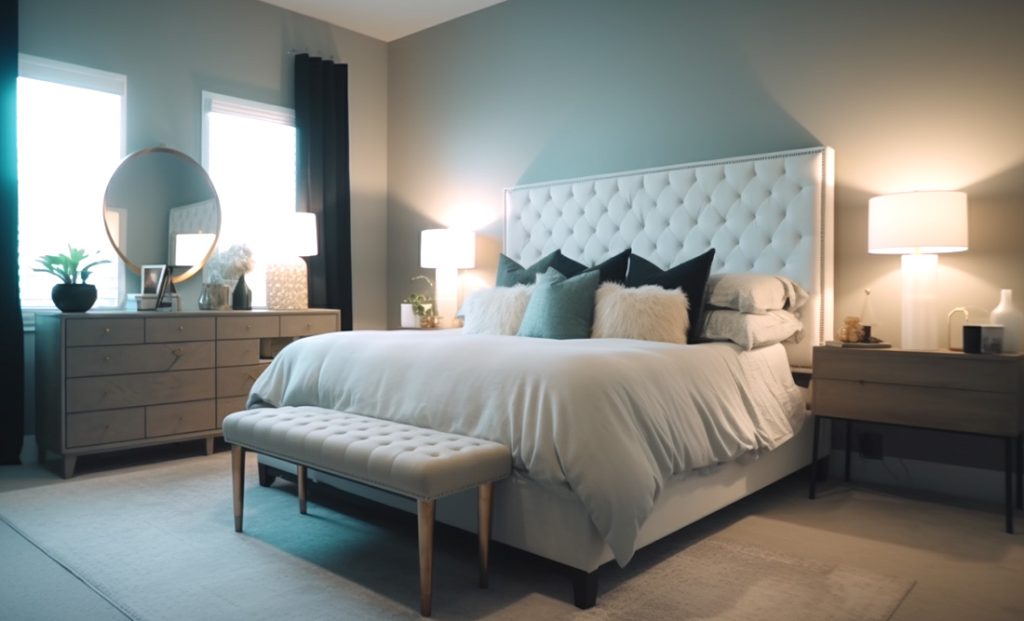
6. Invest In a Good Mattress, Bedding, and Pillows
This one might seem obvious among the bedroom design tips for better sleep – but it’s worth mentioning anyway. Invest in a good mattress that will provide you with support and comfort. A good mattress will spread your body weight on the sleep surface to relieve ear pressure points. On the other hand, support means a mattress can align your spine while you sleep. Additionally, a mattress should be big enough for you and the other occupant to move easily while you sleep.
Although a queen-size mattress and bed will suffice, a king-size mattress and bed provide additional room for better sleep. Ensure your mattress supports your neck and head, keeping them neutral. According to experts from the National Sleep Foundation, getting a medium-firm mattress will support the curvature of your spine.
Another crucial tip in designing your bedroom for better sleep is to invest in proper bedding. Experts suggest that a higher thread count can promote better sleep. However, hot sleepers may have a problem with read counts over 400, which generally traps body heat. That said, try to go for a thread count ranging from 280 to 450.
Choosing a good pillow is essential for promoting good sleep because it can help provide proper support and alignment for your head, neck, and spine. When your head and neck are correctly aligned, your muscles can fully relax, which can help reduce discomfort and stiffness that can interfere with sleep. Additionally, a good pillow can help keep your airways open, reducing snoring and improving breathing during sleep.
Furthermore, a good pillow can help regulate your body temperature while sleeping. Some pillows are designed with materials that can control heat, such as cooling gel or breathable fabrics, which can help prevent overheating and promote a more comfortable sleep environment.
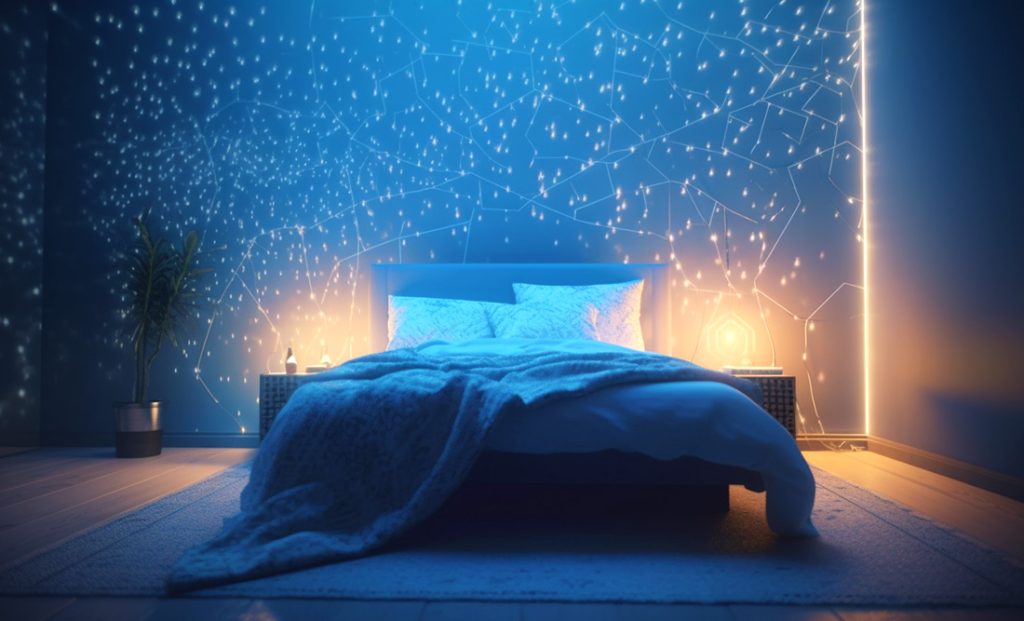
7. Make Your Bedroom Smell Nice
A good-smelling bedroom can promote sleep by creating a relaxing and soothing environment. Our sense of smell is strongly connected to our emotions and can trigger different feelings and behaviors. Certain scents, such as chamomile, lavender, and vanilla, have been found to have calming effects on the body and mind, reducing anxiety and promoting relaxation.
When we smell a pleasant scent, it can also stimulate the release of certain chemicals in our brain, such as serotonin and dopamine, which can positively impact our mood and overall well-being. This can lead to a more peaceful state of mind, making it easier to fall asleep and stay asleep throughout the night.
Additionally, the right scent can help mask any unpleasant odors in the bedroom, such as stale air or musty smells, which can disrupt sleep. Overall, incorporating the right scent in the bedroom can be a straightforward yet effective way to promote a more restful and rejuvenating night’s sleep.
Conclusion
Arranging your bedroom could make or break quality sleep. Knowing these bedroom design tips for better sleep could greatly impact your life and daily routine. These simple tips for optimizing your bedroom for a good night’s rest will ensure you’re energized the next day. We all know how important sleep is, and having enough hours of rest promotes a healthy mind and body.
Want more? Me too! That’s why I’ve also got this for you on Whats-Your-Sign:

